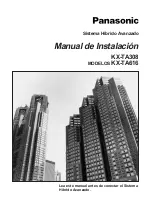
_____________________________________________________
Tec3r Manual Version 1.11
- Page 77 -
©2017 Electromotive, Inc.
transfer pump). High-pressure pumps often burn out when required to draw suction. Most low-
pressure pumps are designed to be able to pull a good amount of suction without failure. Use a fuel
pump designed for a carburetor when selecting a low-pressure pump.
Fuel pumps that are internal to the gas tank will often last longer than external pumps. However, care
should be taken to ensure that an in-tank pump is capable of flowing enough fuel for a given
application.
Reference the vacuum port on the fuel pressure regulator to intake manifold vacuum/pressure. On
highly boosted engines, the hose should be secured with a zip tie or wire.
The fuel pump power should be fused. For proper fuse selection, it is necessary to know the
amperage draw of the fuel pump. Typically, a 10amp fuse will be adequate for most applications.
E.1. Injector Sizing
The most important component of the fuel system is the fuel injector. Injectors must be flow
matched to maintain a consistent fuel supply for all cylinders. Cylinder-to-cylinder fuel variations can lead
to poor performance, increased fuel consumption, or even catastrophic detonation. Additionally, the size of
the injector plays a large role in tuning a vehicle. Injector sizes (flow rates) are generally given in either
pounds-per-hour (lbs/hr) or cubic centimeters per minute (cc/min). (Note that 1 lb/hr = 10.5 cc/min.) These
ratings are either made by the injector manufacturer or by an aftermarket injector modifier. In either case,
the importance of the pressure at which the flow rating was obtained must be realized. As an example, an
injector that was rated at 40 lbs/hr at 43.5psi pressure will NOT supply 40 lbs/hr when operated at 30psi…it
will flow more like 34 lbs/hr.
For an injector to be “sized” properly for an engine, a few things must be taken into consideration:
Number of Cylinders
Number of Injectors
Engine Horsepower
Peak RPM
Brake Specific Fuel Consumption (BSFC)
Injector Recovery Time (IRT)
The Brake Specific Fuel Consumption (BSFC) is a scaling factor used for fuel flow calculations. Its
units are pounds-per-hour per horsepower (lbs/hr per HP). Typically, gasoline engines run BSFC’s between
0.40 and 0.60. Alcohol engines generally run BSFC’s between 0.80 and 1.20. A lower BSFC value
indicates a more efficient engine. The original 4-cylinder BMW M3 engine has a BSFC of around 0.43,
while some rotary turbo engines approach 0.60 BSFC. A turbo engine will normally have a BSFC above
0.5.
Figure E.1. 1 :
Fuel system
plumbing.
















































